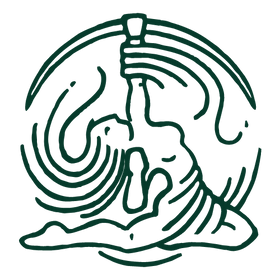Hygge, a wellness strategy for coping with corona-anxiety at home
During a time of rampant anxiety, home-quarantine, and the forced togetherness of small family units, taking some time to consider the value of hygge to individuals, communities, and even to nations is not as crazy or silly as it may initially sound.
You’ve no doubt seen the word “hygge” (“HYUE-gah,”roughly) thrown around a good deal over the past several years, particularly since the publication of Meik Wiking’s hugely successful The Little Booke of Hygge (2016). Wiking (pronounced “Viking”) is CEO of Denmark’s Happiness Research Institute (HRI), an independent think tank on all things wellbeing, happiness, and quality of life. The Institute explores “the causes and effects of human happiness and works toward improving the quality of life of citizens around the world.” This is no coincidence, as the Danish have been voted the happiest people in the world many times over. Thus, one of the cultural phenomena HRI studies most and knows best, is hygge—a Danish born philosophy for how to live a happier, less stressful, more serene and meaningful life. The institute has established an incontrovertible link between the practice of hygge and happiness.
“Hygge” doesn’t really translate in English because it covers such a vast array of personal and cultural experience; but, generally speaking, we might call hygge the art of cozy togetherness and well-being. The word originates from a Norweigan word for “well-being,” though earlier linguistic roots for hygge suggest it may also stem from Old Norse and Germanic terms for “embrace,” “comfort” and “consider.” Hygge is a philosophy that encompasses all of these concepts and more.
Wiking describes the basic “Hygge Manifesto” as something like this:
Create atmosphere. An ambient atmosphere is everything. Attend first to the lighting!
Be present. Turn off the devices and connect with kin and close friends.
Treat yourself. Be kind to yourself. Don’t hesitate to build comfort, relaxation, and a small treat or two into each day; and, be sure to enjoy these things with relish as well as mindful gratitude. For example, Danes are especially fond of warm beverages, which they are apt to take with a thick slice of cake, or some small confection. “Something sinful is an integral part of hygge,” says Wiking—not fancy or extravagant, but something like a sweet scone to dip in a steaming cup of sweet, creamy tea, or a bowl of popcorn, shared.
Sharing is key. Hygge says we share both tasks and play equally amongst each other. No one person is to do most of the chores while another enjoys a majority of TV time. Equality is key.
“Live life like there is no tea tomorrow.” In other words, take in the day with deep gratitude, knowing that “this might be as good as it gets,” so don’t hesitate to notice, enjoy, and give thanks for the opportunities each day brings.
Just be. Hygge is about relaxed togetherness. There is no competition. You are already liked, loved, wanted, and respected. There is no need for striving, bragging, gloating, or jealousy.
Dress like a Dane. Ok, that may not be necessary, but dress for comfort! Wear your favorite sweats. Take a break. Take a catnap. Hygge is the art of relaxing. Think woolen socks, warm sweaters, leggings, and a messy bun!
Call truce. Hygge is no-drama and tension-free. Learn how to put the politics aside for another time and take time to enjoy a relaxed, engaging, intimate conversation or game.
Create togetherness. Tell stories together and reminisce. Build a narrative of togetherness. Create healthy work-life balance. Spend time with your beloveds in friendly, down-to-earth, welcoming, and comfortable ways.
Make a haven. The importance of safety cannot be overstated when it comes to hygge, and this sense of security can come simply from the loving reasurrance we give our families, friends, and community that we are team, working for one another, committed to one another’s well being as much as we are humanly able to be. Be a tribe.
While much of this may still sound implausible in certain areas of the world right now, it is nevertheless these small gestures of comfort and togetherness that can best feed our spirits, strengthen our bodies, and nourish our resolve to stick this out together, come what may. Hygge is about creating happiness via pleasurable experiences, shared with loved ones, and as it turns out, happiness and good health go hand-in-hand. Current research is finding a direct link between happiness and a robust immune system, lowered risk of heart disease, lower heart rate and blood pressure, increased adaptability to stress, less physical pain, more resistance to chronic disease, and longer life. How? Because when we feel pleasurably rewarded, our bodies produce more “happy hormones,” such as oxytocin, dopamine, and serotonin.
These hormones are responsible for a plethora of positive health effects, such as improved brain function (dopamine improves neuron connectivity), elevated feelings of trust and relaxation, psychological stability, increased ability to focus and learn, elevated mood, as well as a healthy curiosity and motivation.
In a time of forced retreat—when it is critical that we “hold the line” by maintaining the discipline and motivation to stay in our homes, mixing only with our immediate family until the curve of viral spread has been flattened—it is crucial we look for small, accessible ways to bolster our sense of happiness and contentment at home, as well as our committment to physical distancing and self-quarantine for the benefit of all (togetherness). Practicing hygge is not decadent, selfish, or shallow. Honestly, it may be a collective survival strategy.
In times of stress, war, and even famine, it is always the small, continued rituals of comfort and tradition that people find most rewarding and life-affirming—small, daily rituals of care and reward that reinforce our sense of okayness because they strengthen our sense of togetherness, bolster us emotionally by urging us to find the silver lining in it all, and that quite literally help our immune systems to function more effectively.
In a sense, hygge was born of necessity in a sometimes brutal and dangerous landscape as a way for inhabitants to learn how to find joy in the midst of months of winter darkness, ravaging weather, and cold. While the world outside our homes is arguably more uncertain and dangerous than the long, fierce winters of the far north, hygge nevertheless offers important tools and medicine for coping with the stress, anxiety, doubt, and depression so many of us are experiencing right now. Practicing hygge can boost our sense of safety and well being, even when the uncertainty beyond the walls of our home seems threatening.
Text and Photography Copyright © 2023, Andrea Lawse. All Rights Reserved.




